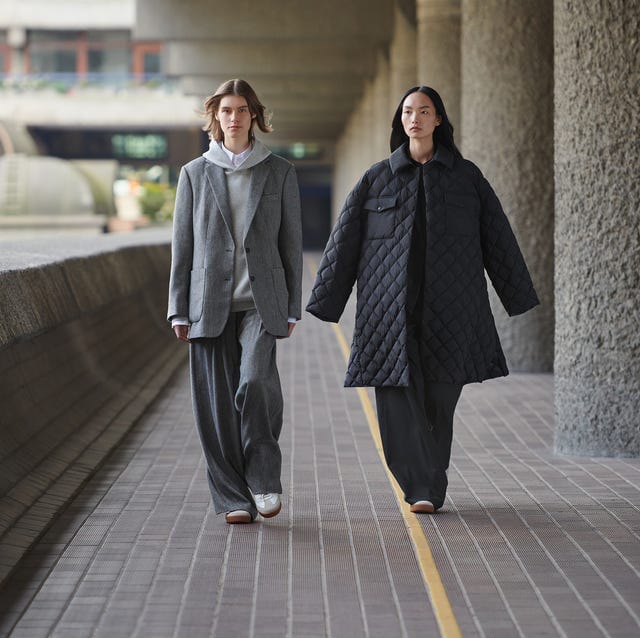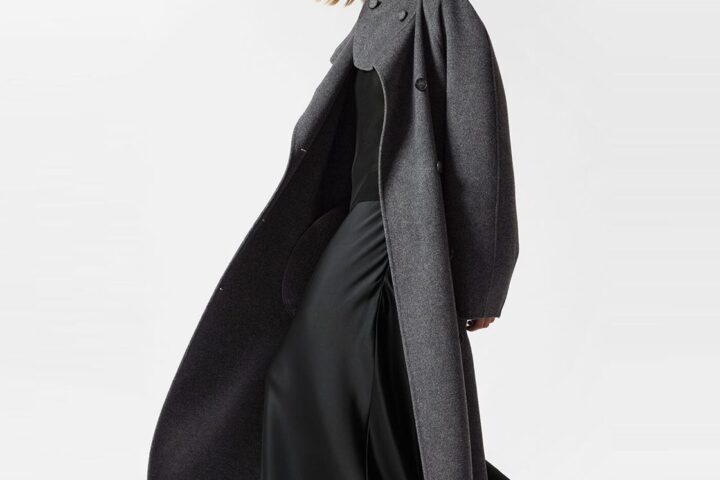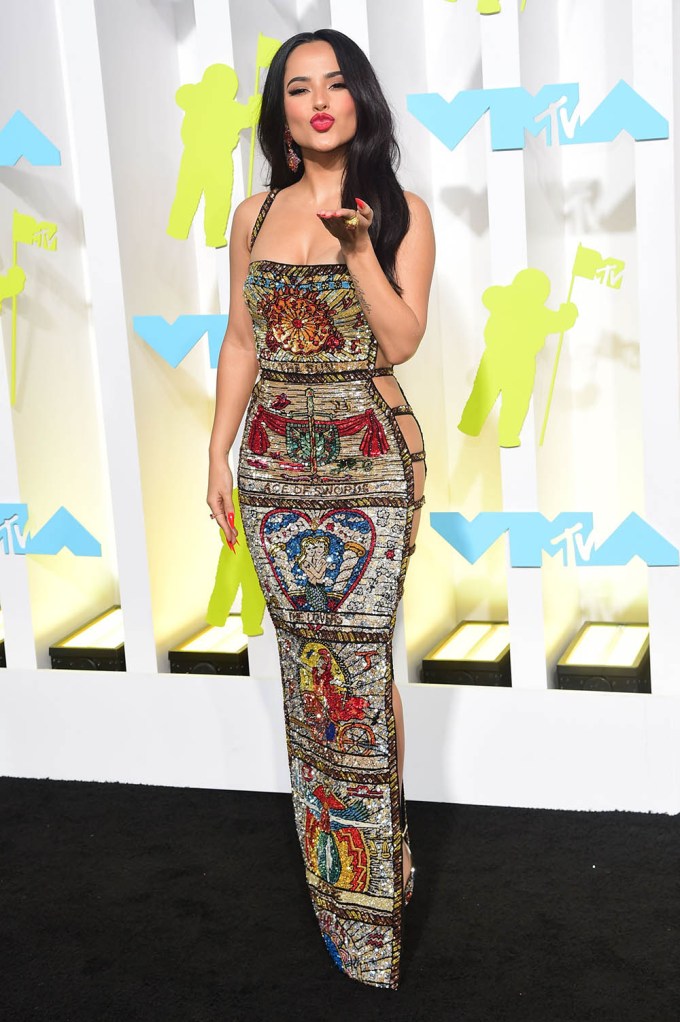It’s nighttime in England when I reach Clare Waight Keller at home over Zoom. She looks like she’s ready to start the day, not end it, with a kind smile and a warm yet professional aura, dressed in a perfectly oversize deep-navy sweater with the sleeves rolled up.
“Is it Uniqlo?” I ask. I wonder because Waight Keller officially became the Japanese brand’s creative director in September, after having a successful run of designing a much-hyped and often sold-out capsule collection of chic, elevated essentials called Uniqlo:C. “Yes,” she says, “but I bought this five or six years ago. I’ve been a Uniqlo customer for the last decade, even before I worked for them.” She adds that she’s always believed that the brand offers “incredible quality for the value. You never go there feeling like you’re getting ripped off.”

Quality and value are two things that Waight Keller is extremely well-versed in, having come from a design background that has included positions at some of the most prestigious high-fashion labels in the world. She began her career as a stylist for women’s ready-to-wear at Calvin Klein, moving on to do the same job for Ralph Lauren’s Purple Label. After that, she oversaw women’s ready-to-wear and accessories at Gucci under Tom Ford.
Waight Keller became the creative director for Pringle of Scotland in 2005, then went on to take the helm at Chloé, where she worked from 2011 to 2017. Her final role before joining Uniqlo was creative director of Givenchy, a position that led her to form a close bond with Meghan Markle, who famously chose Waight Keller to design the gown she wore to wed Prince Harry in 2018. The designer has always been known for her ability to capture the various touchpoints of feminine codes of dress, with a design vernacular that runs the gamut from strong tailoring to dresses that always showcase a fluid romanticism. Her design DNA lies somewhere in between playful tomboy and classic British style sensibilities.
At a time when several European fashion houses are eyeing new talent for their top roles, one would be remiss not to throw Waight Keller’s name on the list of worthy contenders. She is and always has been a quiet force in the industry and one of very few leading women at the top. But Waight Keller was less interested in continuing to work within the glamorous halls of those luxury fashion brands. And she’s not the only former luxury designer to make the move this year: Zac Posen became creative director of Gap Inc., and Natacha Ramsay-Levi took charge of design at Ecco. What Waight Keller says she was after was something more grounded in the everyday, something that could give more people a spark of inspiration—a feeling of aspiration for many, not just the few who can afford it.

As Waight Keller explains, “I think with something like Uniqlo, where the prices are affordable, more people can actually play with fashion.” She adds, “I don’t think people should be denied great items because something is more affordable.” Waight Keller’s approach to designing for Uniqlo is not about trends, and it’s not about imaginative storytelling. It’s completely intuitive. In that sense, she feels a lot more free in the way she creates, noting that “great product is great product,” whether it’s a sweater like hers, a pair of wide-leg jeans, or an oversize anorak.
She points to a simple tote bag—one she thought would work best for a laptop—that went viral in Korea after TikTok users discovered that it was the perfect size for holding a helmet for a motorbike, one of the more popular modes of transportation there. It sold out in 10 minutes. “Those things just take a life of their own. I think it’s really a bad thing to design stuff just for social media or for a trend. If it’s a great product, people will take what they want from it.” She adds, “I guess that’s the joy of fashion, right? People all have their own ideas about and ways to play with what you’re putting out into the world.”
Her vision for Uniqlo comes at a moment of inflection for fashion, when many consumers are rejecting trends in favor of a more personal, more instinctual way of dressing. Ironically, what Waight Keller is proposing about the importance of quality and accessibility is similar to what so many luxury designers have been saying backstage over the last two seasons when describing their collections, using words like reality and approachability and everyday woman when, mainly because of price points, those clothes are so far beyond the average person’s needs and wants.
Waight Keller believes that having options is the ultimate luxury, as in the perfect three or four $40 knits or $15 tees to swap in and out with your designer jeans or a buttery leather bag worth thousands. Because of the breadth of product and customer, she also feels like she has much more creative freedom, untethered to narrative or trend or exclusivity. “I think that’s that special thing about Uniqlo,” she says. “The quality is so great, these pieces work beautifully with whatever level of product you style them with.”

None of this is to say that Waight Keller doesn’t still appreciate the finer things. She has an archive of her own designs, but also a collection of pieces from some of her heroes, including Helmut Lang, Guy Laroche, Saint Laurent, and James Galanos. “It’s eclectic,” she says. “There are always those pieces that are just great in terms of fabrications—the sweaters or coats you go back to time and time again. You can always give a new take on it, and I often go back and look at colors or silhouettes to refresh some ideas.” She also finds inspiration in her three children, two girls in their 20s and a teenage boy, and the way they put clothes together. They sometimes like to raid her closet, taking their own pieces or secondhand pieces plus their mom’s things and making them their own. They know where to find the key to her closet, but she keeps a close watch. “There are some untouchables,” Waight Keller says with a laugh. “I’m like, ‘No, that is not going to the pub with you on Friday night.’ ”
Mixing, whether across price points or genders, is something that drives Waight Keller. “I shop the men’s at Uniqlo as much as I do the women’s,” she says, noting also that data shows many customers across the globe are doing the same. “I love that. I think that’s also something that’s almost impossible to do in luxury; you don’t really shop across in luxury,” she says. “Everything is meant to mix together, and that just feels very fresh to me: the idea of putting merchandise out there and letting the customer pull the look together. It’s a friendlier way to shop than in the luxury market. In luxury, it feels very much one thing or another.”









